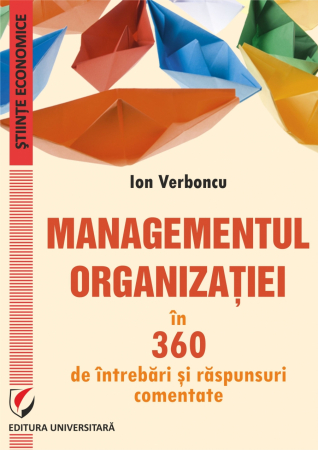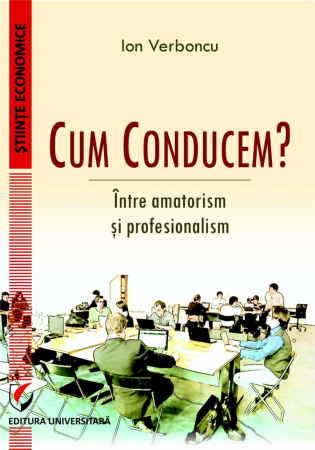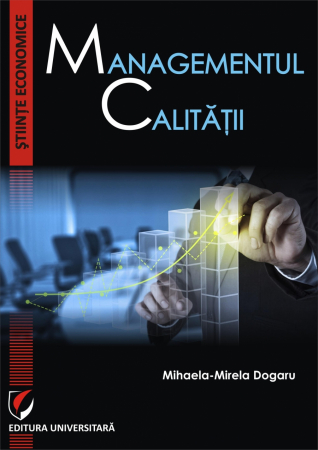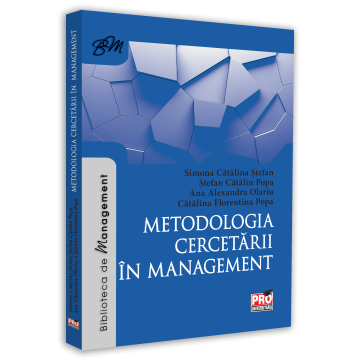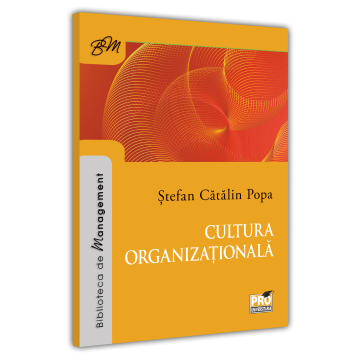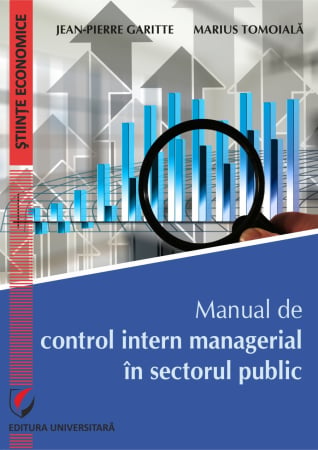ISBN: 978-606-28-1166-2
DOI: https://doi.org/10.5682/9786062811662
Publisher year: 2020
Edition: I
Pages: 190
Publisher: Editura Universitara
Author: Vadim Dumitrascu
- Description
- Download (1)
- Authors
- Content
- More details
- Where to find it
- Reviews (0)
Vadim Dumitrascu
-
General Management of the Company. Concepts. Tools. Role Models
Download
Introduction / 7
I. The fundamental economic mechanisms of the company / 9
1. Company - basic business unit / 9
2. Added economic value / 11
3. The value chain of the company / 14
4. Business model of the company / 18
5. Competitive advantage / 22
6. Distinctive competences / 25
7. The internal processes of the company / 27
8. Intellectual capital / 32
9. Competitiveness of the company / 36
10. The competitive field of the company / 41
11. Profit and cash flow of the company / 46
12. Profitability and break-even point / 48
13. Capital and the cost of capital / 53
14. Labor productivity / 55
15. Sustainability, viability and financial balance of the company / 5
II. Organization, functioning and current management of the company / 63
16. Company as an organization / 63
17. Models of representation of the organization / 68
18. Organizational structure / 73
19. Informal organization / 78
20. Content and tasks of company management / 80
21. Company management systems / 84
22. Management as a decision-making process / 89
23. Company performance - efficiency and effectiveness / 93
24. Basics of work behavior management / 98
25. Performance modeling through behavior management / 102
26. Integrated economic efficiency of the company / 106
27. General conditions of the company's efficiency / 111
28. The organizational culture of the company / 115
29. The company's global communication system / 120
30. Organizational crises at company level / 124
III. Company strategy and development / 129
31. Operational decisions versus strategic decisions / 129
32. Corporate social responsibility (CSR) of the company / 132
33. Objectives, power and conflicts at company level / 137
34. Strategy and process of strategic reflection in companies / 141
35. Investments as a “financial engine” of the company's strategy / 144
36. Typology of business strategies at company level / 147
37. Strategic balances of the company / 150
38. Identity, image and reputation of the company / 154
39. The company's business network / 159
40. The effects of external synergy and competitiveness / 163
41. Management of organizational knowledge and learning in companies / 167
42. Management of company complexity / 172
43. Management of organizational change / 176
44. Project management / 180
45. What kind of management is more suitable for the company? / 183
General bibliography / 188
Throughout its existence, a company constantly assumes three fundamental hypostases: first of all, the company is a microeconomic system whose function-goal is to produce performance by pursuing economic objectives; then, the company is an organization, respectively a human community with everything that means this - mentalities, traditions and common values, informal communication, antipathies and sympathies, conflicts, struggle for power, etc .; Finally, the company is a dynamic entity, which changes and adapts, according to the variations that take place in its environment, in order to survive and develop. The three avatars of the company are inextricably linked and intertwined to such an extent that the understanding of each of them is possible only by exploring the other two. This conclusion is of utmost importance for managerial activity. The three perspectives on the company - "machinery" generating economic results, human community and evolutionary organism - lead us to believe that the management of the company is not only a strictly economic management, but also an organizational management and, at the same time, a development management. The management of the company is all three aspects simultaneously, without any discrimination, without any hierarchy, without any order of priority. Of course, if he wants to be efficient and professional. The stated optics summarize the central mission of the modern management of the company - the task of the management is to create and maintain a competitive company, able to produce results in the context of a fluctuating and complex environment. Fulfilling this mission is by no means possible if the emphasis is only on one of the three dimensions reported, usually on economic management, the other two being ignored. The success of the managerial activity is conditioned by the harmonious integration of the three sides in the decisions, policies and practices of the company's management. This idea sums up the "red thread" that runs through the entire work. This book was developed for use by students of economics, especially those of the programs "Finance-Banking" and "Accounting and Management Informatics", giving them a systemic conception of the operation and management of modern companies.
Vadim Dumitrascu
Customer Support Monday - Friday, between 8.00 - 16.00
0745 200 718 0745 200 357 comenzi@editurauniversitara.ro
6359.png)
![General Management of the Company. Concepts. Tools. Role Models [1] General Management of the Company. Concepts. Tools. Role Models [1]](https://gomagcdn.ro/domains/editurauniversitara.ro/files/product/large/general-management-of-the-company-concepts-tools-role-models-2990-7365.jpg)



